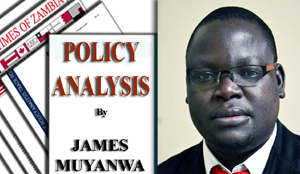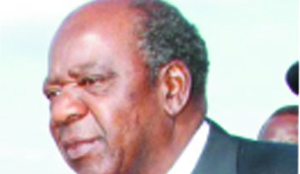 YES, the tone has clearly been set for the 2015 Budget, which is expected to be presented to Parliament by Finance Minister Alexander Chikwanda on October 10, 2014.
YES, the tone has clearly been set for the 2015 Budget, which is expected to be presented to Parliament by Finance Minister Alexander Chikwanda on October 10, 2014.
Indeed through the proposed 2015-2017 Medium Term Expenditure Framework (MTEF) and the Policies for the 2015 budget; and President Michael Sata’s speech to Parliament during the official opening of the Fourth Session of the 11th National Assembly, the Government has made
its intentions known.
It is now obvious as what kind of a budget the Government would come up with for 2015. Clear is also the other legislative measures the Government will come up with which are needed to implement most of its policies in 2015 and beyond.
It is clear that in 2015 the Government wants to continue to focus on creating jobs and reducing poverty and inequality on a sustainable basis.
But this can only be achieved by investing more in sectors that have been identified to best promote employment, increase productivity, contribute to higher and inclusive economic growth, especially in the rural areas.
To achieve that, the country needs to grow the economy at higher rate than the current average of about 6.5 per cent.
Preliminary data shows that Zambia posted a real Growth Domestic Product (GDP) growth rate of 6.7 per cent last year while this year the figure could come down to 6.5 per cent.
Through the 2015-2017 MTEF, the Government projects that the real GDP growth rate for 2015 will go up almost by one per cent to 7.3 per cent, albeit we have not been told what will cause that economic upsurge.
If that is achieved, that will be the highest growth rate in five years.
The nominal GDP is projected to grow from K166.078 billion this year, to K189.783 billion in 2015.
The per capita income – which I loosely define as the value for the average amount of wealth in United States dollars a Zambian would get if the total value of wealth was shared among all citizens equally – is targeted to rise to US$1,999 in 2015 from the projected $1,847 this
year.
In my view this is a very important benchmark in that it measures the income in relationship with the population in a given country.
The only problem I have with it is that since it is a mere average figure it does not tell us anything about the gap between the richest nationals and the poorest.
It, therefore, makes much sense to talk about the Government’s completion of the construction of 41 of the 84 targeted secondary schools and further talk about how many people will, as the result of that development, access education services.
Yes, announcements like the one by President Sata that the Government will address the critical shortage of student accommodation at universities and colleges by constructing 9,600 bed-space hostels at three public universities and one college are seemingly closer to
home.
From the presidential speech it is obvious that in the 2015 Budget, the Government will continue focusing on the areas which can help to reduce poverty and the entailing evils like hunger and illiteracy.
This will be done through various wealth creation and redistribution mechanisms like the upgrading of the new districts by bestowing them with necessary facilities befitting modern and improved habitats.
Since all the 32 new districts are already operating, with some civil servants working and sleeping in tents, further funds will be required for the establishment of structures, electrification of some of them and generally bringing the areas to district standard.
Of course the agriculture sector will remain key.
The peculiarity of the sector is in its capacity to enable the Government to achieve food security, promote diversification, increase productivity and value addition at various levels of society, including at the individual one.
To harness the sector, the Government seems determined to continue investing in facilities like storage sheds where K108.5 million has been invested with a view to creating 117,000 tonnes storage capacity, mainly for the staple food, maize.
The Government’s plan to bring 17,500 hectares of land under irrigation is materialising and so far, as Mr Sata indicated, 4,500 hectares have already been worked on while by the end of this year another 7,000 hectares will have been completed.
Under the 2015 Budget, the rest of the 6,000 hectares will be worked on.
The Government will next year move closer towards the full implementation of the long-awaited decentralisation – which in my view is another vehicle to take development to all parts of the country – by financially empowering the local councils.
In that vein, huge resources are expected to go towards the mooted local Government equalisation fund which will be established to strengthen the foundation for devolution.
Related to that, is the issue of the shortage of housing units in the country which has been a thorny one.
It is apparent that under the 2015 Budget, further resources will be allocated towards that area through relevant institutions like the Zambia National Building Society (ZNBS).
Comments: jmuyanwa@gmail.com, 2600955 431442, 0977246099, 0964742506







